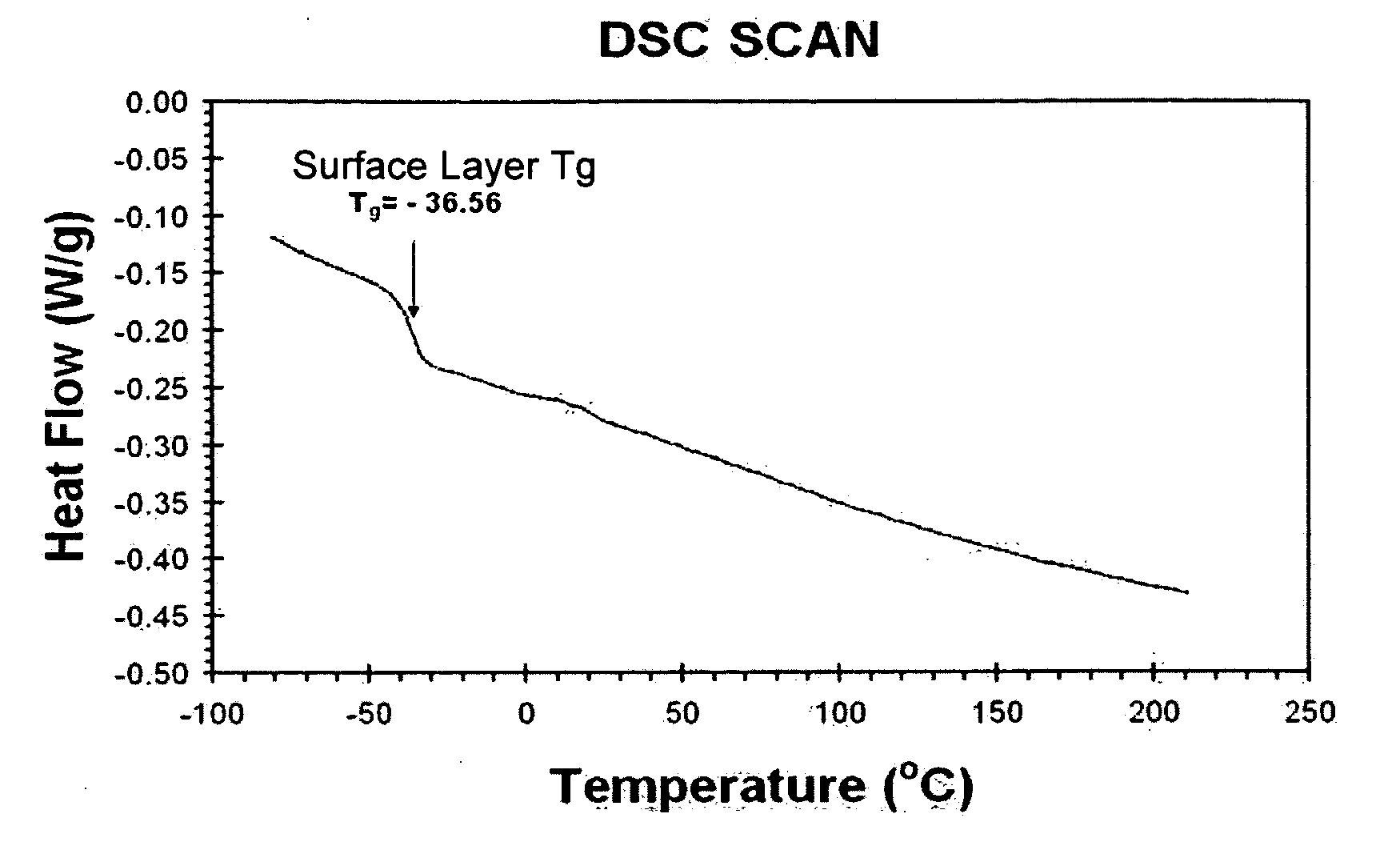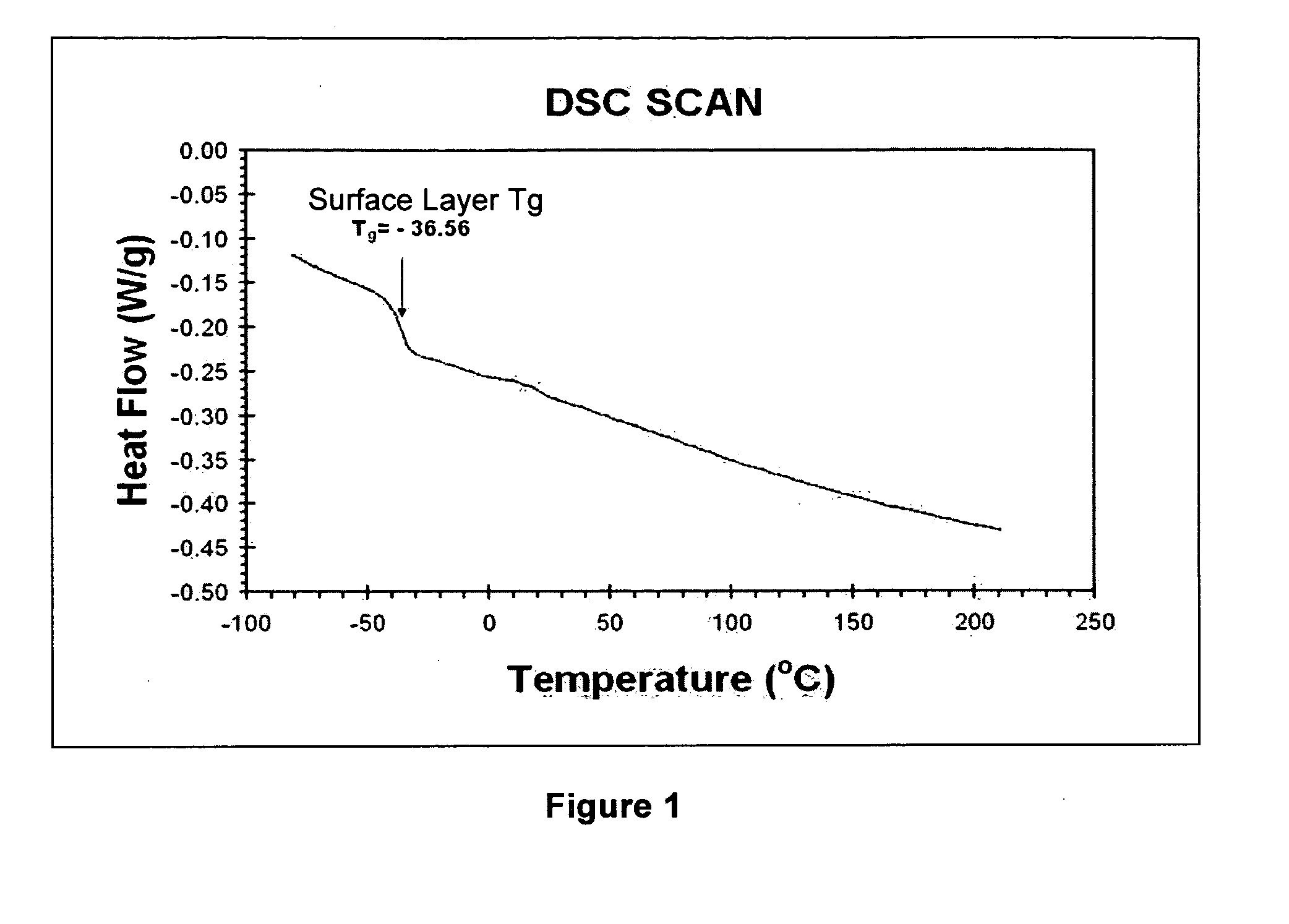Rubber composition containing a polymer nanoparticle
a technology of nanoparticles and rubber, applied in the direction of non-skid devices, special tyres, transportation and packaging, etc., can solve the problems of increasing the hysteresis of rubber compounds, and more energy loss
- Summary
- Abstract
- Description
- Claims
- Application Information
AI Technical Summary
Problems solved by technology
Method used
Image
Examples
examples
[0059]Three rubber stocks were prepared using the formulations shown in Table 1. Stocks 2 and 3 had 7 phr and 14 phr, respectively, of nano-particles of the present invention incorporated in place of the styrene-butadiene rubber with the most similar styrene content. The properties of the nano-particles used are shown in Table 2. FIG. 1 shows a DSC analysis of the nano-particles. FIG. 1 indicates that the surface layer of the nano-particles had a Tg of −37° C. while the Tg of the core was undetectable, meaning the Tg of the core was above 200° C.
[0060]Viscoelastic properties of the three cured rubber stocks are shown in Table 3 wherein the results were obtained from temperature sweep experiments. Temperature sweep experiments were conducted using a spectrometer at a frequency of 50 Hz and a 0.2% strain for the temperature ranging from −50° C. to −5° C., and a 1% strain for the temperature ranging from −5° C. to 60° C.
[0061]Rubber compounds 2 and 3 which contained the nano-particles ...
PUM
| Property | Measurement | Unit |
|---|---|---|
| Temperature | aaaaa | aaaaa |
| Temperature | aaaaa | aaaaa |
| Temperature | aaaaa | aaaaa |
Abstract
Description
Claims
Application Information
 Login to View More
Login to View More - R&D
- Intellectual Property
- Life Sciences
- Materials
- Tech Scout
- Unparalleled Data Quality
- Higher Quality Content
- 60% Fewer Hallucinations
Browse by: Latest US Patents, China's latest patents, Technical Efficacy Thesaurus, Application Domain, Technology Topic, Popular Technical Reports.
© 2025 PatSnap. All rights reserved.Legal|Privacy policy|Modern Slavery Act Transparency Statement|Sitemap|About US| Contact US: help@patsnap.com



